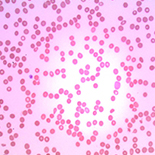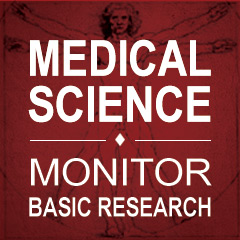Graves’ Disease and Pancytopenia: An Unusual Presentation
Salman Otoukesh, Juan Arenas, Mona Mojtahedzadeh, Maryna Popp, Tamis Bright, Zeina Nahleh, Osvaldo Padilla, Claudia S. Didia
Med Sci Case Rep 2014; 1:25-28
DOI: 10.12659/MSCR.892303
Available online: 2014-09-24
Published: 2014-09-24

Background:
Several case reports have been published presenting new and unusual manifestations of hyperthyroidism involving different body systems. The majority of them have been reported in the setting of Graves’ disease (GD). Pancytopenia and autoimmune hemolytic anemia (AIHA) are two rare complications of GD, which may lead to delay in diagnosis or unnecessary investigation. In this case report we present a patient with both of these rare complications.
Case Report:
Thirty-three year old Hispanic male with past medical history of untreated hyperthyroidism presented with progressive bilateral lower extremity edema. Physical examination revealed generalized lymphadenopathy. Laboratory results demonstrated pancytopenia and hyperthyroidism. During the hospitalization patient’s hemoglobin dropped significantly and blood transfusion became challenging due to a coombs positive antibody (IgG+). Peripheral blood smear revealed spherocytes and pancytopenia. Excisional lymph node biopsy showed reactive lymph node; bone marrow aspiration and biopsy were consistent with hypercellularity. Finally, following a month course of methimazole and glucocorticoids significant improvement was observed on repeat laboratories.
Conclusions:
The uncommon manifestations of GD are diverse which can affect numerous body systems including the hematopoietic and should be considered in the differential diagnosis of hematologic abnormalities to prevent wrong diagnosis and unnecessary investigation.
Keywords: Graves Disease, Pancytopenia, Receptors, Thyrotropin





